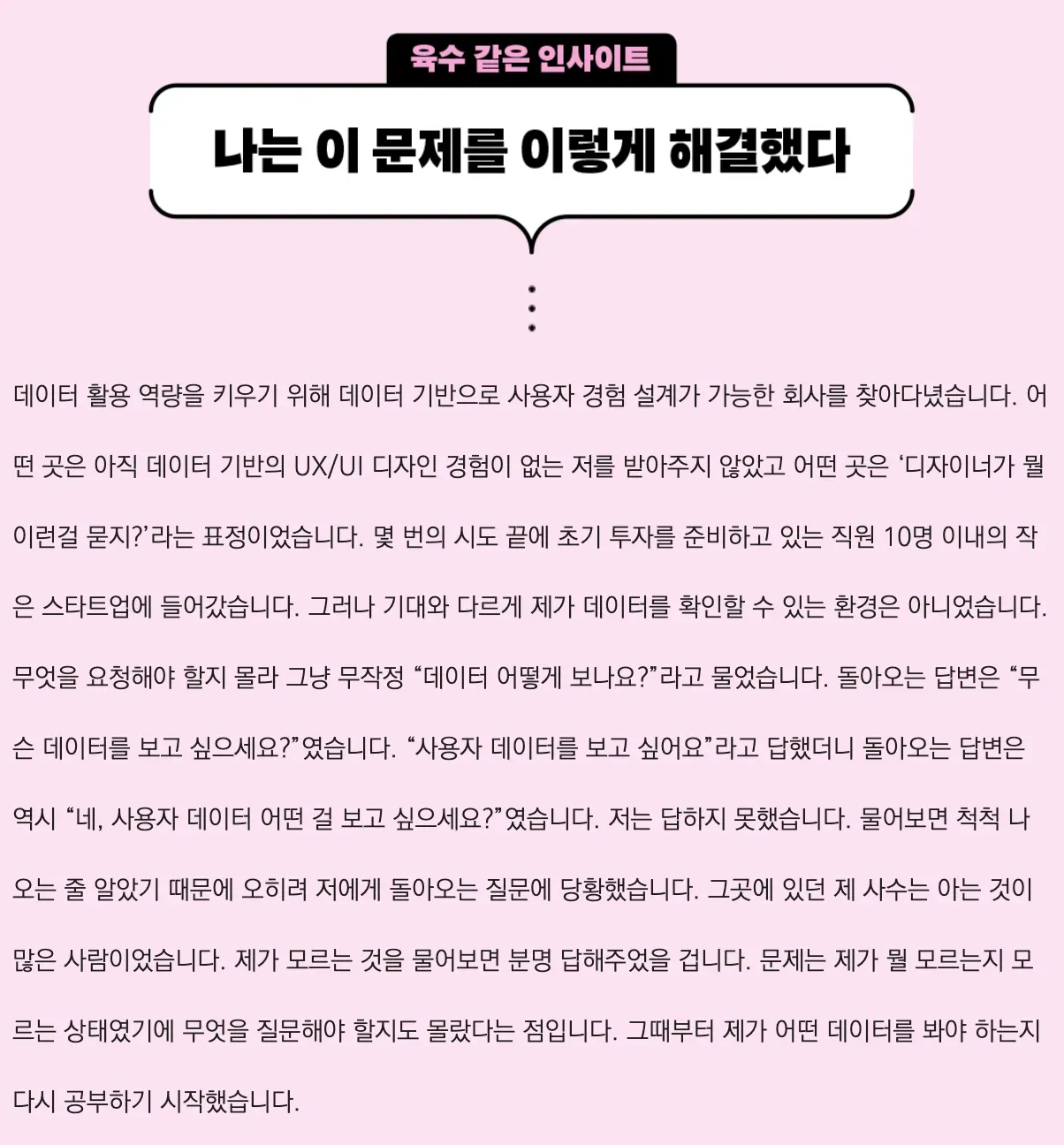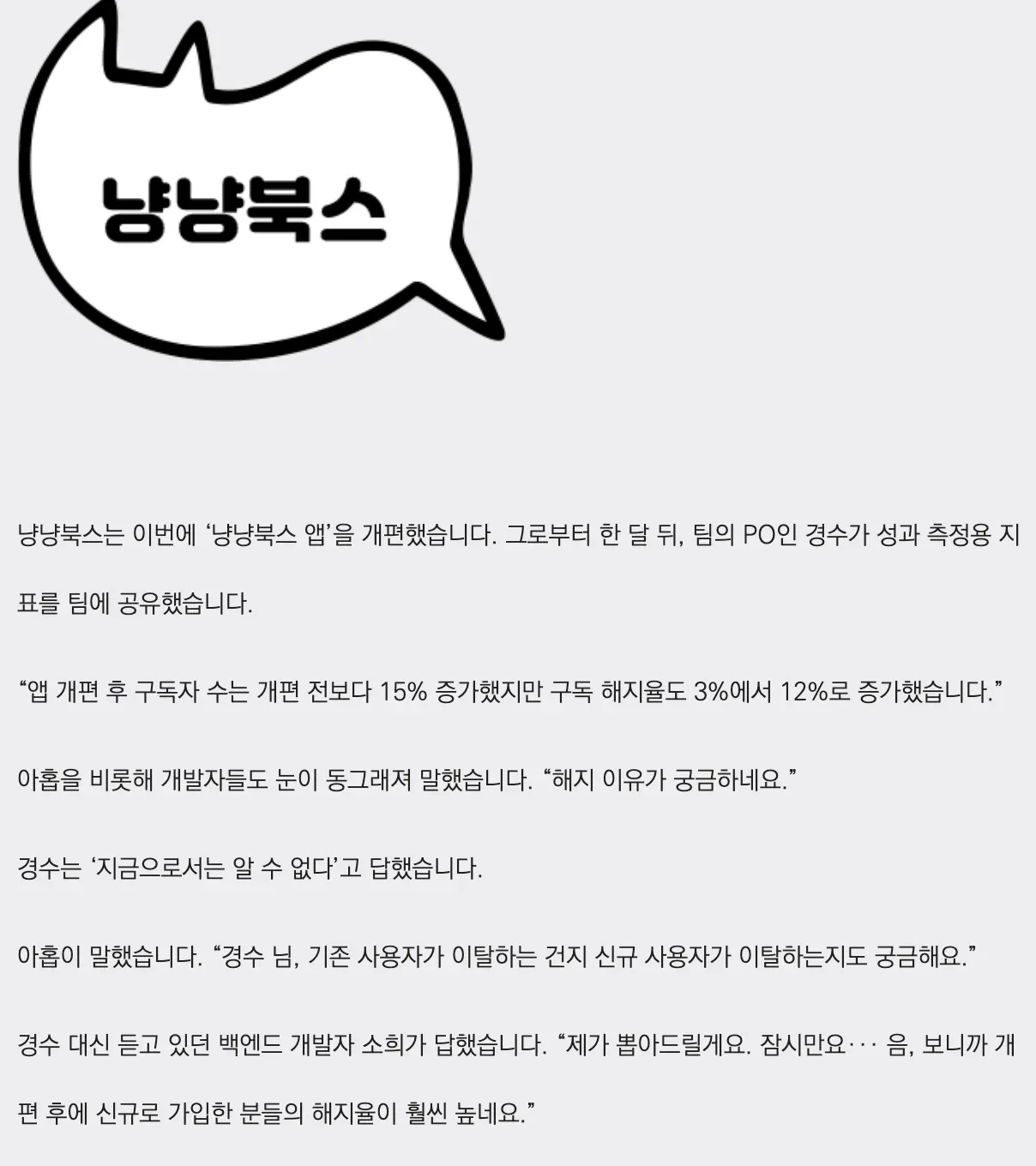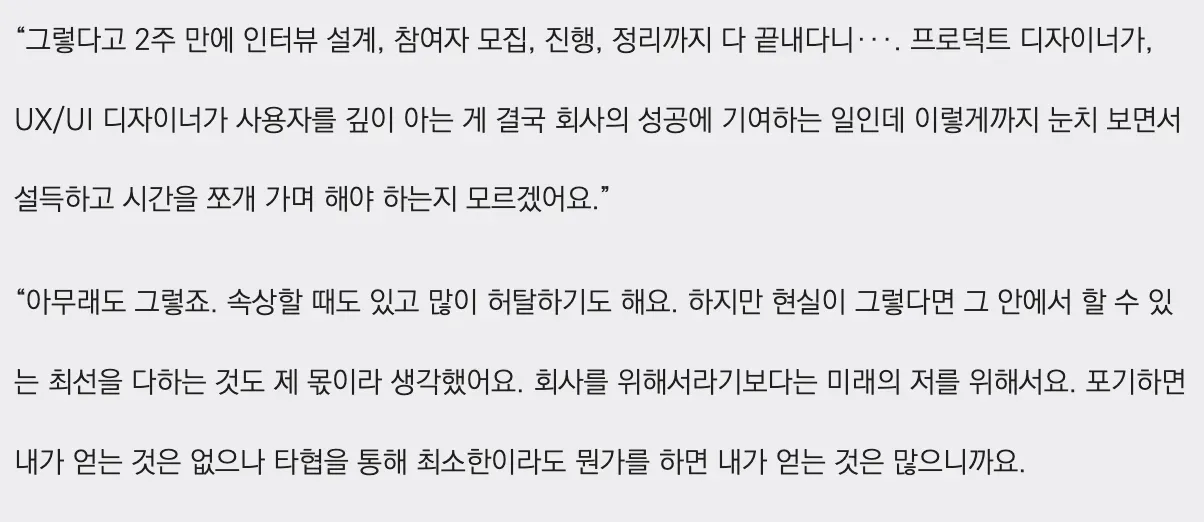"This review was written with a book provided by Hanbit Media for the <I Am a Reviewer> review group activity."Note: This book is only available in Korean and published exclusively in South Korea. There is no English translation available at this time.
Book Introduction
This book follows the journey of two product designers, Nine and Green, as they navigate and grow in their careers. Through 9 chapters, it uses engaging episodes at fictional companies—CatCatBooks and CatArchStore—to illustrate real-world problem-solving scenarios that designers face. While the stories are fictional, they're remarkably realistic. I was often surprised to recognize situations I've encountered during my decade in the corporate world. And when developer stories occasionally appear, I can't help but feel a little called out.

UI/UX
UI stands for User Interface, UX stands for User Experience.
- UI (User Interface): Visual design elements that users see and click (buttons, colors, layouts)
- UX (User Experience): The experience and satisfaction felt throughout the entire process of using a product
These are essential elements in any service, and UI/UX has its nuances. Before UI/UX became a major focus—until the early 2010s—design was often delegated to design publishers and largely overlooked. But at some point, it gained prominence and became essential knowledge for frontend engineers. I first encountered UI/UX through Steve Krug's "Don't Make Me Think," the bible of web and mobile UI, and later gained extensive knowledge through hands-on experience. While books provide valuable foundation, every service is unique, so I learned tremendously by collaborating with designers and asking about their decision-making process. UI/UX isn't static—it evolves with trends. Especially now with AI features, there's even more to learn and consider. Reading this book gave me much deeper insight into how product designers approach and make UI/UX decisions.

Chapter Contents
- Chapter 1
It's Not Your Fault That Data-Driven UX Is Difficultdiscusses why UX is difficult. - Chapter 2
Why Our Company Has No Datatalks about data collection and organization. - Chapter 3
The Truth UX/UI Designers and Product Designers Should Knowcontains thoughts on problem-solving through user feedback. - Chapter 4
Verifying the Business Modelshows various UX directions according to different business models. - Chapter 5
Confirming Purpose and Goalsdiscusses determining tasks through problem-solving purposes and goals, and finding goals through data. - Chapter 6
Checking Data Refinement Statuscovers how to refine collected data and make it usable. - Chapter 7
Data Hides in Unexpected Placesdiscusses various data collection methods including market research. - Chapter 8
Market Research to Increase Accuracy of Internal User Data Interpretationexplains how to connect internal data with external market research data. - The final Chapter 9
Surveys and User Interviewsdiscusses user feedback methods and their utilization.

Review
If you're expecting detailed usage guides or tutorials for specific tools, you might be disappointed—this book doesn't provide step-by-step tool instructions. Instead, it focuses on what insights these tools can provide, what outcomes they enable, and how to approach problem-solving with them, all seamlessly woven into the narrative.
Reading Difficulty: Structured in a storytelling format that beginners can easily read, making it accessible without burden.
Practical Application: While situations will differ depending on the service, this book covers various scenarios that will definitely be helpful in practice.
Three key characters drive this story: the two protagonists Nine and Green, and Gyeong-su. While there are two protagonists, the narrative initially follows Nine as she navigates challenges as a new product designer. Later, the focus shifts to Green, a Gen Z newcomer with a refreshingly direct communication style who isn't afraid to ask questions immediately.
Many of the scenarios in this book feel so familiar that I could swear I've lived through them myself. The stories authentically capture experiences common in startups or small teams.
While written for product designers, the content is so valuable that I strongly recommend it to engineers as well. In this AI-driven era where 10x or 100x engineers exist, and individuals can single-handedly launch services while wearing multiple hats, understanding UI/UX has become crucial for developers. This book is perfectly timed for our current landscape.
Recommended For
- Product designers (beginners to intermediate)
- Developers interested in UI/UX
- Those working at startups or small teams
- Those who want to learn data-driven design
